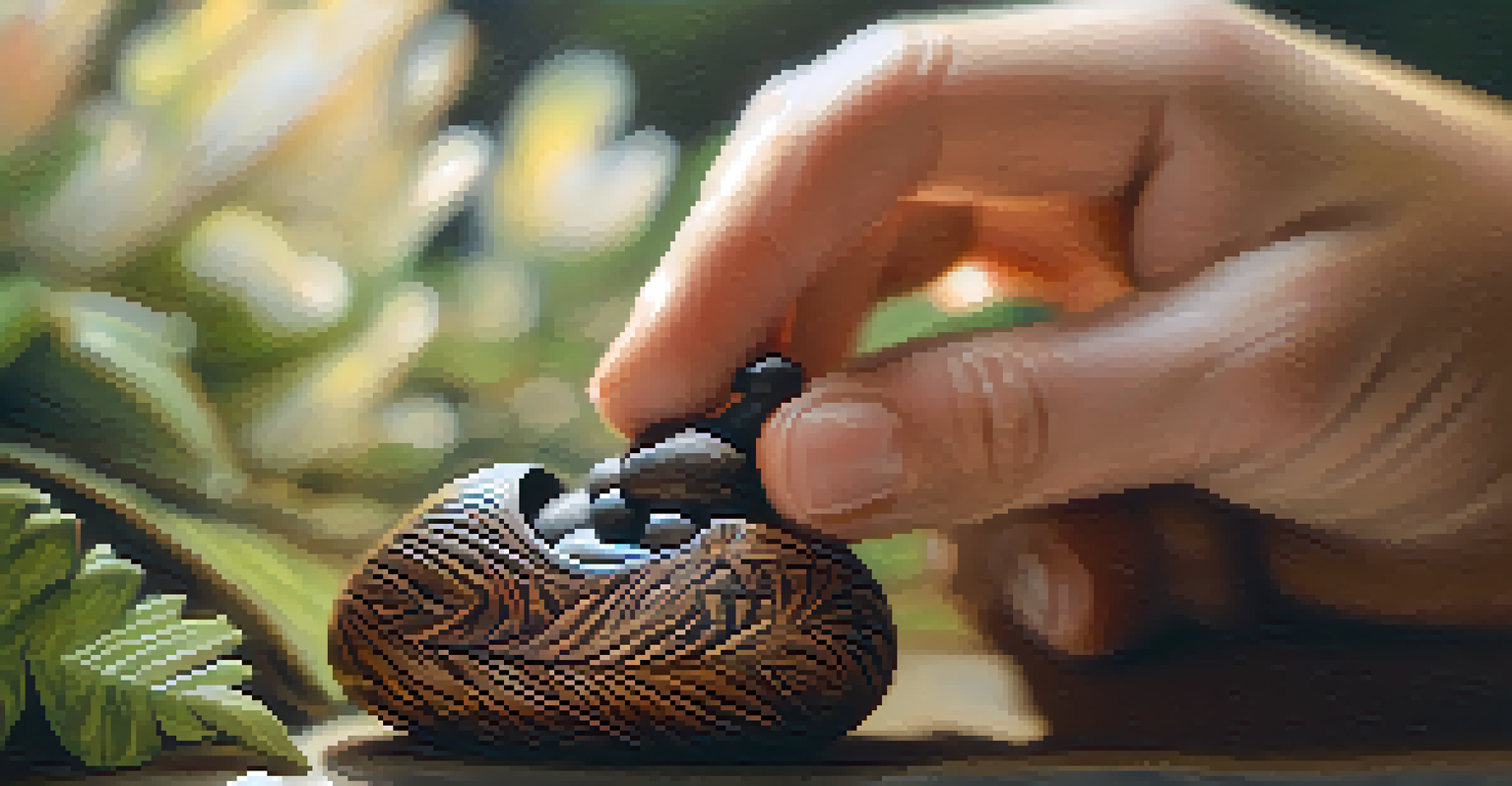Cultural Perspectives on Entheogens and Grief Management

Understanding Entheogens Across Cultures
Entheogens, often referred to as psychoactive substances, have been used for centuries in various cultural practices. These substances are typically derived from plants and fungi and are used to induce altered states of consciousness. In many indigenous cultures, entheogens serve as a bridge to the spiritual world, providing insight and healing during difficult times.
The soul always knows what to do to heal itself. The challenge is to silence the mind.
For instance, the use of peyote in Native American ceremonies highlights how these substances can facilitate deep emotional and spiritual connections. Participants often report experiencing profound revelations that help them navigate complex emotions, including grief. This cultural understanding sets the stage for how entheogens are utilized in grief management.
By examining the historical and cultural significance of entheogens, we can appreciate their role not just as substances, but as tools for healing. These practices show that grief is not merely an individual experience but a collective journey often supported by community rituals.
The Role of Ritual in Grief and Healing
Rituals play a crucial role in how cultures incorporate entheogens into their grief management practices. Many societies create structured environments where individuals can safely explore their emotions, often under the guidance of experienced facilitators. This communal aspect not only provides support but also fosters a sense of belonging during a profoundly isolating experience like grief.

For example, in some South American cultures, ayahuasca ceremonies are held to help participants confront their losses. These ceremonies typically involve singing, drumming, and sharing personal stories, creating a rich tapestry of collective grief and healing. This environment allows individuals to express emotions that might otherwise remain unspoken.
Entheogens as Healing Tools
Entheogens are used in various cultures as tools for healing and spiritual connection, especially in managing grief.
Through these rituals, participants often find solace and understanding, transforming their pain into shared experiences. This shift in perspective underscores the importance of community support in the grieving process.
Personal Stories: Transformative Experiences
Personal narratives can vividly illustrate the impact of entheogens on grief management. Many individuals report life-changing experiences through the lens of entheogenic rituals, often describing a sense of connection to lost loved ones. These stories highlight how these substances can facilitate healing by allowing individuals to communicate with the spiritual realm.
In the midst of movement and chaos, keep stillness inside of you.
Take, for instance, the story of a woman who participated in a mushroom ceremony after losing her father. During the experience, she felt a profound connection to him and received messages that brought her comfort and closure. This personal anecdote showcases the potential of entheogens to reshape one’s understanding of loss.
Such transformative experiences can empower individuals to reframe their grief, viewing it not as an ending but as a continuation of love and connection. These stories emphasize the healing potential inherent in the intersection of psychedelics and personal loss.
Scientific Perspectives on Entheogens and Grief
Recent scientific research has begun to explore the therapeutic potential of entheogens in managing grief. Studies have shown that substances like psilocybin can lead to lasting improvements in emotional well-being, with participants reporting decreased symptoms of depression and anxiety. This emerging field combines traditional knowledge with modern science to validate the healing properties of these substances.
Neuroscientific research suggests that entheogens can promote neuroplasticity, the brain's ability to reorganize itself by forming new connections. This process can help individuals break free from destructive thought patterns often associated with grief. For many, this newfound perspective is pivotal in their healing journey.
Community Rituals Enhance Healing
Rituals involving entheogens create supportive environments that foster community and collective healing during grief.
By bridging cultural practices with scientific inquiry, we can better understand how entheogens may serve as valuable tools in grief management. This integration opens doors for more research and potentially broader acceptance of these practices in therapeutic settings.
Cultural Sensitivity in Entheogen Use
As interest in entheogens grows, it’s crucial to approach their use with cultural sensitivity. Many of these substances are deeply rooted in specific traditions and should be respected as such. Appropriating these practices without understanding their cultural significance can lead to a disconnect and potential harm.
For example, when individuals from outside a culture seek to participate in ayahuasca ceremonies, they must do so with respect and acknowledgment of the traditions involved. This includes understanding the roles of facilitators, the importance of ritual, and the broader context of these healing practices.
Cultural sensitivity not only honors the heritage of these practices but also enriches the experience for everyone involved. It fosters a respectful dialogue between cultures and promotes a more ethical approach to the use of entheogens in grief management.
Legal and Ethical Considerations
The legal status of entheogens varies widely across the globe, influencing how they can be accessed and used in grief management. In some countries, these substances remain illegal, limiting the ability of individuals to explore their therapeutic potential. This legal landscape raises ethical questions about access to healing practices and the rights of individuals seeking relief from grief.
For instance, individuals in regions where entheogens are prohibited may feel compelled to seek them out through underground channels, which can pose risks. This not only places them in dangerous situations but also undermines the integrity of traditional practices that emphasize safety and community support.
Cultural Sensitivity is Crucial
Respecting the cultural significance of entheogens is essential to ensure ethical use and enrich the healing experience.
Navigating these legal and ethical complexities is essential for responsible use of entheogens. Advocating for changes in legislation could pave the way for more people to access these healing practices in a safe and supportive environment.
Future Directions for Research and Practice
As we move forward, the intersection of entheogens and grief management presents exciting avenues for research and practice. Continued exploration of indigenous practices can inform modern therapeutic approaches, creating a more holistic model for healing. By integrating cultural wisdom with scientific findings, we can enrich our understanding of grief and healing.
Future studies could focus on long-term outcomes of individuals who engage in entheogenic practices for grief. This could help identify best practices and refine therapeutic approaches, making them more accessible and effective. Collaboration between researchers, healthcare providers, and indigenous communities will be vital in this process.

Ultimately, embracing a multidisciplinary approach can lead to innovative solutions for grief management, offering hope to those navigating their loss. By honoring the past while looking towards the future, we can create a more compassionate framework for healing.